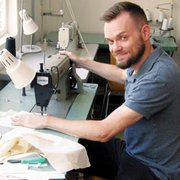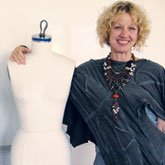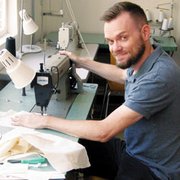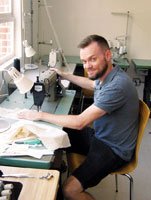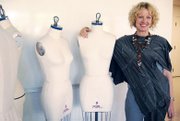Woodbury University Revamps Its Fashion Design Department
Established more than 80 years ago, Woodbury University’s fashion design program is getting a makeover under the department’s new chair, Kathryn Hagen, who came on board last July to head up the small department, located on the school’s 22.5-acre campus in Burbank, Calif., not far from The Walt Disney Co. and other entertainment and media outlets.
One of Hagen’s first steps was to bring in two faculty design mentors, Eduardo Lucero and Jared Gold, to work with the students.
More mentors are being lined up, including swimwear designer Rod Beattie, who is expected to oversee a design project this next academic year.
But one of Hagen’s most ambitious projects is to create two master’s degree programs—one in fashion design and one in costume design. No other institute in Los Angeles offers a master’s degree in those subjects, she said.
Hagen sat down with California Apparel News Senior Editor Deborah Belgum and talked about how her background shaped her for this job and how she hopes to beef up Woodbury’s fashion design department.
What is your fashion training, and where did you study?
I studied at Parsons School of Design in New York in the 1970s, where our mentors were people like Donald Brooks and Calvin Klein. Donna Karan was a senior when I was a sophomore.
After graduating, I went off to Europe for six months and traveled. When I came back, I worked as an assistant to two designers at one of the last couture houses on Seventh Avenue in New York, Teal Traina.
But I was always torn between fine arts and fashion. I went back to school to study painting at the Arts Students League of New York. I had a studio in New York for six years, where I did portraits. But I also did freelance work in fashion.
When I moved to Los Angeles, Rosemary Brantley, who also studied at Parsons, was just starting the fashion design department at Otis.
I got a job at Otis, ultimately overseeing the drawing end of the department and teaching there for 27 years.
Why did you decide to become the new chair of Woodbury’s fashion department?
I had spent a good decade thinking about how I would do a fashion design program differently and run my own program. … Coming into Woodbury, it had a program that had not been nurtured as much as it could be. They were trying to get a costume design track off the ground, and that was not going well. (There are costume design classes at Woodbury but no cohesive program for a degree in that subject.)
I was able to immediately to pull in Eduardo Lucero as a senior mentor last fall. And in the spring Jared Gold said he would be my other senior mentor. So I have two really good designers working with the kids.
I am pulling in an award-winning costume and set designer to set up the whole costume track and get that going.
We are writing the proposals for three separate master’s tracks. In 2014 we hope to launch the master’s degree in costume design. There is not anything like it in Southern California. (Graduate programs in fashion design and functional design will come later.)
The school is just starting its film program, so there will be a natural collaboration between costume design and film. And we have a new program for game art and design. Costume designers will be working with the game artists.
Why develop master’s degree programs for fashion and costume design?
We have the ambition of being one of the cutting-edge fashion schools in the world. In Europe, until you have a master’s degree program, you are considered a trade school. Places like Central St. Martins and Antwerp Royal Academy of Fine Arts have master’s degrees. If you want to be recognized worldwide, you have to have a master’s degree program.
What are some of the other changes you have made in the last year?
We used to have inexpensive dress forms when I came. So we ordered 21 new Wolf dress forms, which cost $825 for a regular form and more than $1,000 for forms with legs. We just ordered 10 more forms. That was a big-ticket purchase.
I initiated more drawing classes. We did not have figure-drawing classes. They will be doing figure drawing in foundation classes and fashion-model drawing in upper-level classes.
The students are working more in Adobe Photoshop to scan their hand drawings into Photoshop and then layer clothes onto the same figure. It is another tool to move into the 21st century. We want them to get their ideas onto paper quickly with a more high-tech approach.
What other programs would you like to initiate?
We would like to have downtown Los Angeles studios for our seniors. They would do labs there for their collection and get their resources and materials from around the Fashion District. We are also talking about the idea that in their senior year, students would function like designers in the industry and have sample makers help them sew their collection so they would concentrate on more creative designs and not sew a collar 10 times, which may not be productive.
